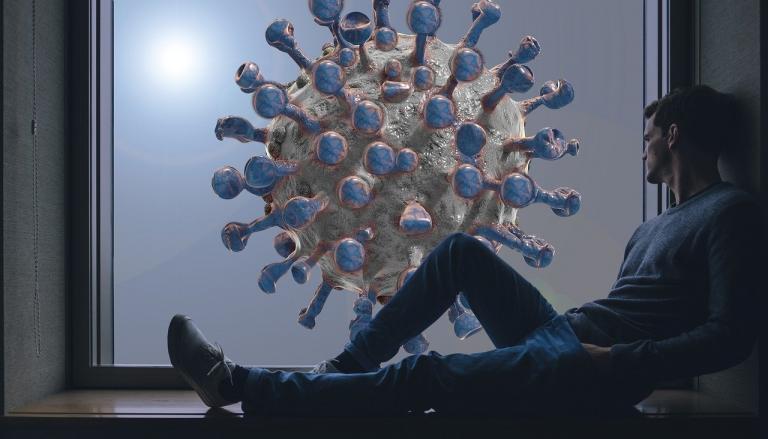Just over two weeks ago on April 2, we had a post at this blog entitled Get Ready for a “Hell of a Bad Two Weeks.” President Trump and his coronavirus task group had said two days earlier that Americans should brace themselves for 100,000 to 240,000 deaths even if everyone followed the shut-down rules. The next two or three weeks, those that have just passed, were going to be the “roughest,” he said. The experts projected that today when I am writing this, April 16, would be the peak of the epidemic, with the most deaths, after which we would see a gradual but still deadly decline.
Our practice here at the Cranach blog, as readers of our New Year’s editions know, is to make predictions but then check them. So I put the date on my calendar and planned to blog about it one way or the other. Some of those dire predictions did take place. Others, including the larger projections based on computer modeling, did not.
First, what proved true: It was, as President Trump said it would be, if you would excuse the profanity, a “hell of a bad two weeks.” At that briefing, the death toll in the U.S. from the epidemic was 3,500 Americans. As of today, in only two and a half weeks, it is nearly ten times that number: 33,405.
At that briefing two and a half weeks ago, it was predicted that on April 16, the rate of deaths per day would be 2,607. That was not too far wrong. As reported by Reuters, on Wednesday, April 15, a record 2,371 died.
UPDATE: The numbers for April 16 have come in and they were a surprising and shocking 4,591! That’s almost double the number from the day before. The modeling correctly picked April 16 as the peak day (unless the numbers keep going up), but this time it underestimated the number of deaths.
Overall, though, the computer modeling for the total number of deaths emphasized at that briefing was wrong. Of course, we won’t know the total number of deaths until the epidemic is over, but the modelers themselves have been revising their predictions ever downwards.
When the epidemic first came into our national awareness, experts were predicting that if nothing was done, the number of Americans who would die, according to this story from March 17, would reach 2.2 million. If the country took strong action, we might get lucky and only one million would die.
This got our attention. The shut-down orders went into effect.
By the end of March, social distancing and sheltering in place had become the norm. The predictions reported at the briefing were much-improved, but still frighteningly high: 100,000-240,000. These numbers assumed that Americans would be following the new protocols.
But even then, as I reported in my post, the Institute for Health Metrics and Evaluation (IHME) was predicting a somewhat lower number: 93,765 deaths. This would be the total by August 1, after which time, the epidemic, according to the model, would be over.
Here is the very useful IHME site, which graphs a great deal of data, enabling users to see the extent to which we have “flattened the curve.” Today the total deaths are estimated to be, by the 4th of August, 68,841.
UPDATE: The IHME has revised the estimate downward again, to 60,308.
That would be slightly more than twice as many as have died so far, at the “peak” of the epidemic. If that means we are half-way through it, then the numbers of the falling curve might be expected to equal that of the rising curve, so that might be reasonable, but we don’t really know how sharp the drop-off in infections might be.
So the models and expert predictions have been off dramatically. That the number of deaths is lower than predicted, defenders of the models say, is evidence that the draconian shut-down of American society has been working. But those models took that shut-down into account. At the very least, the models failed to calculate correctly what the effect of that shut-down would be.
The problem is in the nature of computer modeling, which only extrapolates current data into the future. But there are so many unknown variables that our knowledge is never going to be complete. This is certainly true of our knowledge about the COVID-19 epidemic, as the scientists researching it would be the first to tell you.
The data itself is uncertain. We don’t really know how many people have been infected with the virus, due to the difficulties in getting people tested and to the fact that many of the infected have no (or hardly noticeable) symptoms. Nor do we really know how many people have died from it, since states are using different criteria for reporting COVID-19 deaths, the effects of the virus may be long-lasting and are not always distinguishable from other causes. Thus, the researchers are always revising their models as they get more data. We have to use these tools, but their conclusions are not as certain as the graphs and the statistics make them seem.
Here is another prediction that proved wrong: Back on March 16, I wrote in a post that the isolation of our small rural community in Oklahoma “naturally creates a state of protective quarantine.” Was I ever wrong! For several weeks, our county ranked 4th in the state in the number of confirmed coronavirus, just behind the three biggest cities.
One bit of good news: The latest IMHE model projects that the daily death count will decline to zero on June 27. [UPDATE: Now June 17.]
Then again, that model may be wrong.
Image by Gerd Altmann from Pixabay














